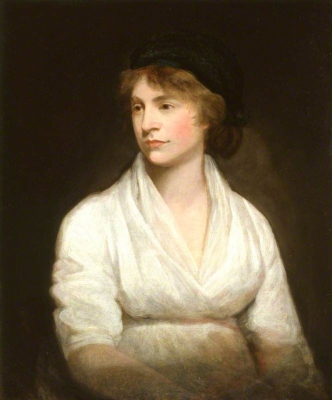
About Mary Wollstonecraft
Mary Wollstonecraft was born in London to a comfortable family but soon her father, who was a bully and abusive, diminished the family’s wealth through a series of bad business choices. When her mother passed away in 1780, Marry moved out of her home to earn her own living.
She was angry that her brother was allowed to receive formal education but she wasn’t. So she began to educate herself and dedicated her life to writing and speaking for women’s rights.
Along with her sister and her friend Fanny, Mary established a small school for girls, and from her teaching experience came her first piece of writing – a pamphlet called “Thoughts on the Education of Daughters” (1787). When her friend passed away, the school went through some financial struggle, and Mary had to move on.
For some time, she worked as a governess for a family in Ireland but soon discovered that domestic work was not something she liked doing. Three years later, she returned to London and began to work as a translator and literary advisor for a radical publisher called Joseph Johnson. In this capacity, she entered the intellectual circles in London and became known as a radical thinker.
She published “A Vindication of the Rights of Woman” in 1792, where she argued passionately for women’s equality and laid down the doctrines of the feminist movement that followed many years later. It lamented on women’s position in society as adornments at home and described society as rearing ‘gentle, domestic brutes’. This book made her both famous and infamous in her own time.
In 1792, she moved to Paris and began to write critically against the violence taking place in the early stages of revolution. She met Captain Gilbert Imlay in the English circles there and had a daughter with him. They soon separated, and a few years later, she met an old friend of Joseph Johnson, political writer-novelist William Godwin, in whom she found an intellectual companion. Both William and Mary abhorred marriage but eventually did tie the knot. Soon after, Mary gave birth to her second daughter. She died a few days later due to complications in childbirth.
Picture Credit : Google

